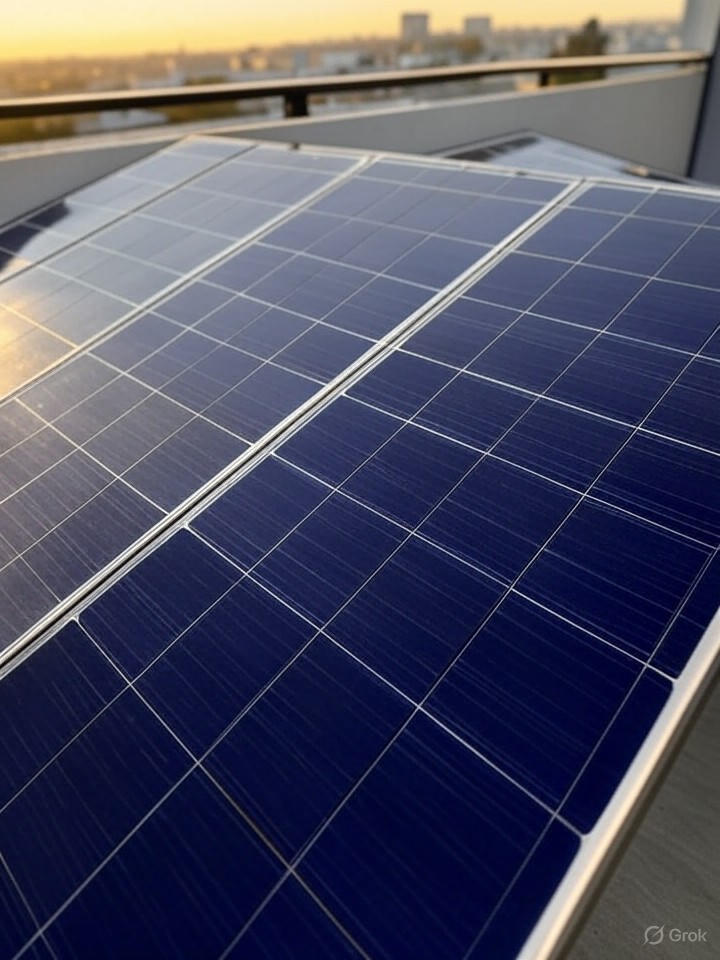The Rise of Plug-and-Play Solar
In the evolving world of renewable energy, a quiet revolution is unfolding on America’s balconies and decks. Small-scale solar panels, designed to plug directly into standard wall outlets, are gaining momentum as an accessible alternative to traditional rooftop installations. These systems, often no larger than a door, promise to democratize solar power for renters, apartment dwellers, and homeowners deterred by high costs or complex permitting processes. Recent developments suggest this trend is accelerating, driven by policy shifts and technological advancements that make solar more approachable than ever.
Take Terrence Dwyer, a homeowner who recently installed a deck-mounted solar kit after a simple sales pitch at his door. As detailed in a report from Fast Company, Dwyer’s experience highlights how these plug-in systems are appealing to those seeking quick energy savings without major renovations. With installation times measured in hours rather than days, and prices starting around $500 to $1,000, they’re positioned as a low-barrier entry point into clean energy.
Policy Shifts Fueling Adoption
The catalyst for this surge? A recent budget bill under President Trump that slashed tax credits for residential rooftop solar, making larger systems less financially viable for many. This policy change has redirected attention to affordable alternatives, as noted in coverage from The New York Times, which explores why balcony solar—already a staple in Europe—has been slow to catch on in the U.S. but is now poised for growth. Advocates argue that these compact kits could offset a portion of household electricity needs, potentially saving users hundreds annually on bills.
However, challenges persist. America’s electrical grid, with its varying voltage standards and breaker requirements, isn’t always plug-and-play ready, leading to compatibility issues. A piece in WIRED delves into these hurdles, explaining how grid mismatches and regulatory lags have kept balcony solar from exploding stateside, unlike in Germany where over 400,000 households have embraced “Balkonkraftwerk” systems.
Innovations Driving Accessibility
Innovators are stepping up to address these barriers. Companies like Robinsun are offering high-yield mono-glass and bifacial panels tailored for balcony railings, as showcased on their site Robinsun. These kits feature latest-generation technology that maximizes energy capture even in partial shade, enhancing efficiency for urban environments. Bifacial panels, which absorb sunlight from both sides, represent a key innovation, potentially boosting output by 20-30% compared to traditional models.
On the consumer side, trial runs are proving persuasive. A columnist for The Washington Post conducted a home test of a balcony system, reporting noticeable reductions in grid reliance and energy costs. Such hands-on accounts are building confidence, especially among renters who previously felt excluded from solar benefits due to landlord restrictions or lack of roof access.
Global Lessons and U.S. Barriers
Drawing from international success stories, the U.S. could accelerate adoption by streamlining regulations. In the UK, proposals to allow balcony solar in flats and rentals, as reported by The Guardian, aim to enable millions to cut bills amid efforts to triple solar capacity by 2030. A follow-up safety study into DIY plug-in systems, detailed in another Guardian article, underscores the need for standardized safety protocols—lessons that American policymakers might heed.
Yet, domestic obstacles remain formidable. A movement in California, highlighted by LAist, points to barriers like utility pushback and permitting complexities. Industry insiders note that while plug-in kits bypass some red tape, widespread scaling requires grid upgrades and incentives tailored to micro-solar setups.
Sentiment and Market Momentum
Social media buzz on platforms like X reflects growing enthusiasm, with users sharing stories of easy installations and profitable solar ventures, echoing sentiments that the industry could hit $300 billion by 2030. Posts highlight Germany’s balcony boom as an inspirational model, where supermarket-available kits have radicalized perceptions of solar accessibility, as one viral thread compared $550 balcony units to $30,000 rooftop arrays.
This grassroots momentum is translating to market gains. News from NBC4 Washington and The Press Democrat indicates that demand for these systems is rising, particularly as rooftop credits dwindle. Analysts predict that with falling panel costs and improved inverter technology, balcony and deck solar could capture 10-15% of the U.S. residential market within five years.
Future Prospects and Challenges Ahead
Looking ahead, the integration of smart tech could further innovate this space. Imagine AI-optimized panels that adjust angles automatically or integrate with home energy management systems for peak efficiency. However, experts caution that without federal support—such as expanded tax rebates for small-scale solar—the trend risks stalling amid economic uncertainties.
Ultimately, balcony and deck solar represents a pivotal shift toward inclusive renewables. By empowering urbanites and budget-conscious consumers, it could significantly contribute to national clean energy goals, bridging the gap between ambition and accessibility in America’s push for sustainability. As more households plug in, the true test will be whether infrastructure and policy evolve to match this burgeoning innovation.




 WebProNews is an iEntry Publication
WebProNews is an iEntry Publication